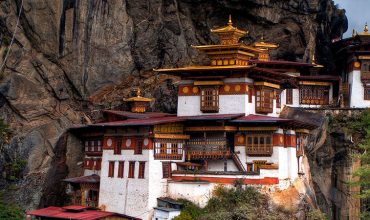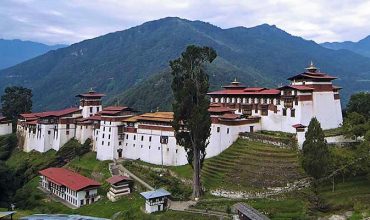Bhutan
About Bhutan
A Buddhist kingdom lying on the Himalayas’ eastern edge is the Country of Thunder Dragon named Bhutan. Bhutan is famous in the world for preserving the Buddhists monasteries, fortresses and culture and tradition. The dramatic landscapes that varies from the subtropical plains to steep mountains and valleys makes the country much more beautiful and amazing. Not only, this Bhutan is land locked country lying between Great countries China and India. The Original Name of Bhutan is Druk Yul whose capital city is Thimphu.
There are 8 UNESCO world heritage sites in Bhutan which includes
1. Ancient Ruin of Drukgyel Dzong
2. Bumdeling Wildlife Sanctuary
3. Dzongs: the centre of temporal and religious authorities (Punakha Dzong, Wangdue Phodrang Dzong, Paro Dzong, Trongsa Dzong and Dagana Dzong)
4. Jigme Dorji National Park (JDNP)
5. Royal Manas National Park (RMNP)
6. Sacred Sites associated with Phajo Drugom Zhigpo and his descendants
7. Sakteng Wildlife Sanctuary (SWS)
8. Tamzhing Monastery
This UNESCO World Heritage Site will surely lure you anyway. While visiting to Bhutan or having Bhutan Tour, it is essential to know about the culture, geography, religions and social norms and values existing the country. Thus, focusing on the subject matter, we are going to have brief discussion of thee subject so that you can have benefit:
#LANGUAGE
In the context of Bhutan, over nineteen dialects spoken in the country. This shows that country is rich in linguistic diversity variation on the geographical location. Bhutan’s national language is Dzongkha which is native language of the Ngalops of western Bhutan. Other two major languages are the Tshanglakha and the Lhotshamkha.
#BHUTANESE CULTURE
Bhutan is famous in the World for its unity in cultural diversity. Due to this reason, they emphasize on the promotion and preservation on their unique culture.
1. How do they eat?
In Bhutan, women usually serve the food or provides the foods to eat but in most cases, the mother serves the food. Bhutanese people do short prayers before eating as well as a small amount of food is offered to the floor as an offering to the local spirits and deities. But with the advancement and evolvement of modernization people are on the way of changing their fooding habits.
2. About Bhutanese Dress
People of Bhutan wears most unique and their traditional dress that has been ruling the dress of over thousands year in Bhutan. Bhutanese men wear the Gho having knee-length robe resembling a kimono that is tied at the waist by a traditional belt known as Kera.
But in context of Women, they wear the Kira which has long, ankle-length dress followed by a light outer jacket called a Tego with an inner layer called a Wonju.
#Major Festivals of Bhutan
Bhutan being rich in cultural diversity makes the Buddhist Country more colorful at religious festivals which are honored in whole country. The major festival is Tshechu. During Tshechu, Every villagers and the general people come up with their finest clothes and gathers at their local temples and monasteries were these festivals take place. This festival is often celebrated to mark important events in the life of the second Buddha. During this festival the Indian/Pakistani Tantric master known as Guru Rinpoche or the Precious Gem come to worship. Similarly, different mask dances are performed together with songs and dances which last for three days.
#Bhutanese People:
Different ethnics people live here in Bhutan among major ethnics are
1.Tshanglas: living in eastern Bhutan they are true aboriginals of Bhutan.
2. Ngalops: Inhabitants mostly in the six regions of western Bhutan are of Tibetan origin. Their tongue is Ngalopkha which is polished version of Dzongkha.
3. Lhotshampas: they live in southern foothills of the country. Believed to be migrated from Nepal in the beginning of the 19th century. They speak Lhotshamkha (Nepali) and practice Hinduism.
But also country has other minority groups are the Bumthaps and the Khengpas, the Kurtoeps, the Brokpas and the Bramis of Merak and Sakteng, the Doyas of Samtse.
-
Nepal Tibet Bhutan Tour
Nepal Tibet Bhutan Tour is designed for those who want to experience the culture, history,...
Duration: 15 DaysUSD 2800 -
Nepal Bhutan Tour
Nepal Bhutan Tour is for those who want to experience the culture, history, geography, the...
Duration: 07 DaysUSD 910 -
Magical Bhutan Tour
Magical Bhutan Tour takes you to the most interesting places and sights of central Bhutan....
Duration: 05 DaysUSD 970 -
Bhutan-City of Thunder Dragons
Bhutan-City of Thunder Dragons is a Buddhist country with vast diversity in the Geography ...
Duration: 5 DaysUSD 970



